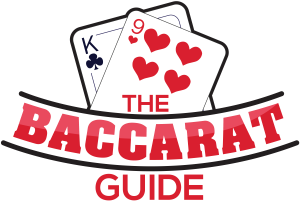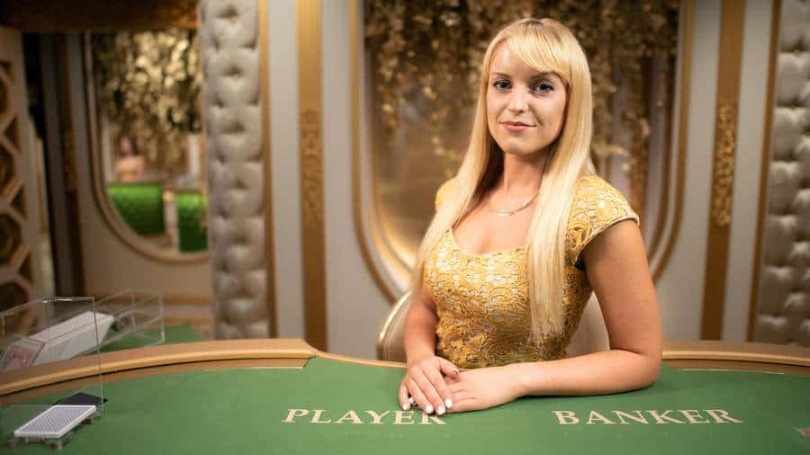This article is about a variant of the card game Baccarat; Baccarat Chemin de Fer.
How to play Chemin de Fer
Six full packs of cards of the same pattern are used, shuffled together. The players seat themselves round the table. In the centre is a basket for the reception of the used cards. If there is any question as to the relative positions of the players, it is decided by lot. The person who draws the first place seats himself next on the right hand of the croupier, and the rest follow in succession.
The croupier shuffles the cards, and then passes them on, each player having the right to shuffle in turn. When they have made the circuit of the table, the croupier again shuffles, and, having done so, offers the cards to the player on his left, who cuts. The croupier places the cards before him, and, taking a manageable quantity from the top, hands it to the player on his right, who for the time being is dealer, or “banker.” The other players are punters.
In Chemin de Fer the house doesn’t take part directly and you can be banker.
The dealer places before him the amount he is disposed to risk, and the players “make their stakes.” Any punter, beginning with the player on the immediate right of the dealer, is entitled to say “Banco”, meaning to “go bank,” to play against the whole of the banker’s stake. If no one does so, each player places his stake before him.
If the total so staked by the seated players is not equal to the amount for the time being in the bank, other persons standing round may stake in addition.
If it is more than equal to the amount in the bank, the punters nearest in order to the banker have the preference up to such amount, the banker having the right to decline any stake in excess of that limit.
The banker proceeds to deal four cards face downwards: the first, for the punters, to the right; the second to himself; the third for the punters, the fourth to himself. The player who has the highest stake represents the punters. If two punters are equal in this respect, the player first in rotation has the preference.
Each then looks at his cards. If he finds that they make either nine, the highest point at Baccarat, or eight, the next highest, he turns them up, announcing the number aloud, and the hand is at an end. If the banker’s point is the better, the stakes of the punter become the property of the bank. If the punters’ point is the better, the banker (or the croupier for him) pays each punter the amount of his stake.
The stakes are made afresh, and the game proceeds. If the banker has been the winner, he deals again. If otherwise, the cards are passed to the player next in order, who thereupon becomes banker in his turn.
If neither party turns up his cards, this is an admission that neither has eight or nine. In this case the banker is bound to offer a third card. If the point of the punter is baccarat (i.e. cards together amounting to ten or twenty, = 0), one, two, three, or four, he accepts as a matter of course, replying, “Yes,” or “Card.” A third card is then given to him, face upwards. If his point is already six or seven, he will, equally as a matter of course, REFUSE the offered card.
To accept a card with six or seven, or refuse with baccarat, one, two, three, or four (known in either case as a “false draw”), is a breach of the established procedure of the game, and brings down upon the head of the offender the wrath of his fellow-punters; indeed, in some circles he is made liable for any loss they may incur thereby, and in others is punishable by a fine. At the point of five, and no other, is it optional to the punter whether to take a card or not; nobody has the right to advise him, or to remark upon his decision.
The banker has now to decide whether he himself will draw a card, being guided in his decision partly by the cards he already holds, partly by the card (if any) drawn by the punter, and partly by what he may know or guess of the latter’s mode of play. If he has hesitated over his decision, the banker may be pretty certain (unless such hesitation was an intentional blind) that his original point was five, and as the third card (if any) is exposed, his present point becomes equally a matter of certainty.
The banker, having drawn or not drawn, as he may elect, exposes his cards, and receives or pays as the case may be. Ties neither win nor lose, but the stakes remain for the next hand.
The banker is not permitted to withdraw any part of his winnings, which go to increase the amount in the bank. Should he at any given moment, desire to retire, he says, “I pass the deal.” In such case each of the other players, in rotation, has the option of taking it, but he must start the bank with the same amount at which it stood when the last banker retired.
Should no one present care to risk that high a figure, the deal passes to the player next on the right hand of the retiring banker, who is in such case at liberty to start the bank with such amount as he thinks fit, the late banker now being regarded as last in order of rotation, though the respective priorities are not otherwise affected.
A player who has “gone bank,” and lost, is entitled to do so again on the next hand, notwithstanding that the deal may have “passed” to another player.
When the first supply of cards is exhausted, the croupier takes a fresh handful from the heap before him, has them cut by the player on his left, and hands them to the banker. To constitute a valid deal, there must be not less than seven cards left in the dealer’s hand. Should the cards in hand fall below this number, they are thrown into the wastebasket, and the banker takes a fresh supply as above mentioned.
Trivia about Chemin de Fer
Chemin de Fer is the game of choice of Ian Fleming’s secret agent, James Bond. He can be seen playing the game in numerous novels and films, most notably the 1953 novel Casino Royale in which the entire plot revolves around a game between Bond and SMERSH operative, Le Chiffre. The unabridged version of the novel also includes a primer to the game for readers who are unfamiliar with it.
The game was central to the Royal Baccarat Scandal of 1890 in England which involved the future King Edward VII.

